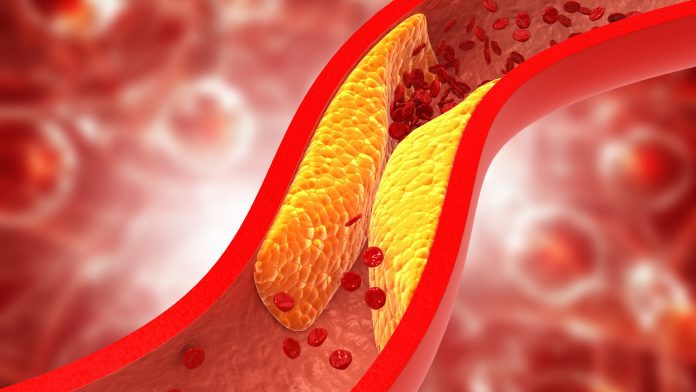
An international research team has found that elevated lipids and dyslipidaemia in early life may worsen cases of atherosclerosis in later life.
The study found that consistently elevated lipids and dyslipidaemia in early life had detrimental effects on atherosclerosis patients in adulthood, but stimulated lipid treatment in adolescence could halt the progression of the disease.
The study was completed as part of a collaboration between Northwestern University in the US, Baker Heart and Diabetes Research Institute in Australia, the University of Bristol in the UK, the University of Turku in Finland, and the University of Eastern Finland.
The main cause of atherosclerosis is abnormal levels of blood cholesterol and triglyceride known as elevated lipids. Dyslipidaemia, where cholesterol plaques are deposited within the blood vessels, is also a major cause of atherosclerosis.
Early treatment can be highly effective
Currently, there is no consensus on screening children and adolescents for elevated lipids and dyslipidaemia. Previous research has suggested that early treatment can be highly effective in children who have inherited lipid disorders. However, it is not known if elevated lipid and dyslipidaemia cause cardiovascular damage in adulthood.
The current study analysed 1,779 participants who were 15 years old at the beginning of the trial and participants were subject to a follow-up trial nine years later. Around one in five participants had elevated lipids or dyslipidaemia at age 15 years. This increased to one in four at the nine-year follow-up stage.
Only one in 1000 adolescents had received treatment for dyslipidaemia by the age of 17. This left 440 adolescents with untreated elevated lipids and dyslipidaemia.
The researchers developed a novel model to simulate a clinical intervention trial. This model involved a treatment intervention at a specific age or follow-up time, allowing the researchers to analyse whether the treatment was working.
Surprisingly, the researchers observed that lipid treatment intervention at the age of 24 years did not halt the progression of atherosclerosis. This suggests that any treatment in early adulthood may be too late to provide cardiovascular benefits. Importantly, lipid treatment at the age of 17 years old, did effectively stop and reverse atherosclerosis progression.
Screening for atherosclerosis in early life could save lives
This evidence emphasises the need for early-life screening and prevention of elevated lipids and dyslipidaemia in the general population.
“We need not wait until we’re in our 40s to have our cholesterol levels checked. A high total cholesterol level and low HDL level damaged the vascular wall as early as adolescence and if not treated early, we might miss a golden opportunity for better cardiovascular health,” said Andrew Agbaje, a physician and clinical epidemiologist at the University of Eastern Finland.
Treatment for atherosclerosis is both complicated and expensive, often with inconsistent results.
“It is important to note that in this study, high total cholesterol, high non-HDL-cholesterol, and a very low HDL level were associated with signs of atherosclerosis, even in normal-weight adolescents. Interestingly, elevated LDL-cholesterol and triglyceride may not yet pose a problem in this age group, especially if there is no genetic inheritance of lipid diseases,” added Agbaje.
“These novel findings should change our approach to atherosclerosis prevention. Public health experts, paediatricians, and government health policymakers should consider lipid screening in adolescence and initiating treatment for high cholesterol and low HDL by age 17 years. Regarding primary prevention of atherosclerosis, the food we eat from early life could either be poison to our blood vessels or an antidote for atherosclerosis, the choice is ours,” he concluded.









